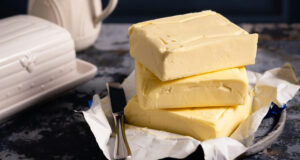Ferment your food: A DIY guide to flavor and health
Published on March 19, 2025
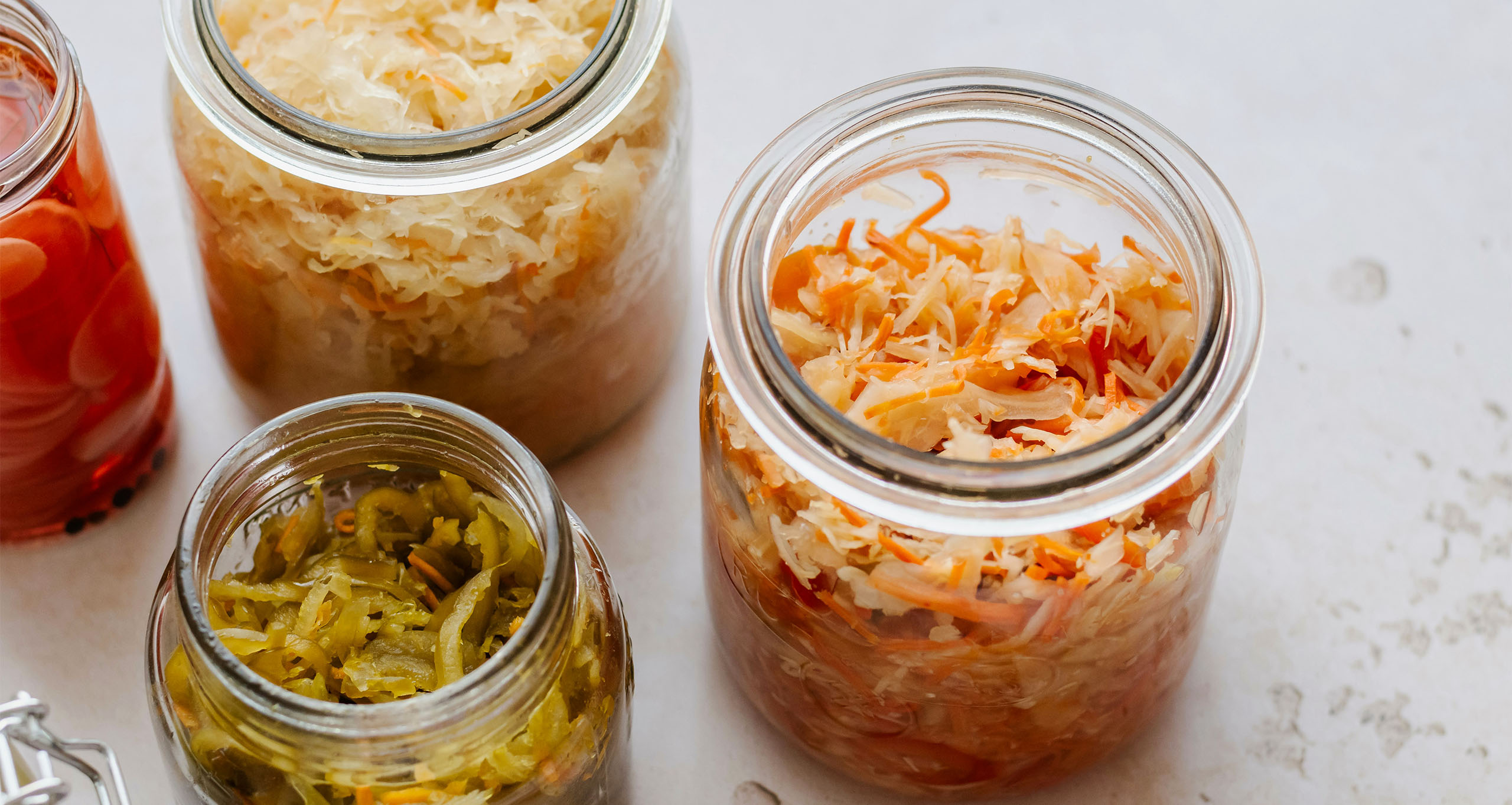
Fermentation is like nature’s magic trick: it turns ordinary ingredients into probiotic-rich, flavorful wonders. Whether you’re a foodie looking to spice up your meals or someone trying to boost gut health, fermented foods are a delicious and health-packed addition to your diet.
Let’s explore why they’re awesome, how to make them, and what to do with them once you have jars of tangy goodness lining your countertop.
Why fermented foods are beneficial
First, let’s get nerdy for a second. Fermentation is a metabolic process that uses microorganisms—like bacteria, yeast, and molds—to transform food. Think of it as inviting helpful little microbes to a party in your kitchen. These guests produce lactic acid, alcohol, and other compounds that preserve the food and give it complex flavors. They also come bearing gifts: probiotics, enzymes, and vitamins that can support gut health, immune function, and even mental clarity.
(Yes, there’s something called the gut-brain axis. Science is wild.)
Here’s a quick rundown of fermented foods you might already know and love:
- Vegetables: Kimchi, sauerkraut, and pickles (but not the vinegary kind — real, fermented pickles).
- Dairy: Yogurt, kefir, and some types of cheese.
- Grains and Legumes: Sourdough bread, miso, and tempeh.
- Drinks: Kombucha, kvass, and good old-fashioned beer and wine.
Not only do fermented foods taste amazing, but they also pack a serious nutritional punch. Probiotics (the friendly bacteria) help maintain a balanced gut microbiome, which is essential for digestion, energy, and immunity. Plus, fermentation often increases nutrient availability and reduces antinutrients in food.
In short, fermented foods are like the overachievers of the nutrition world.
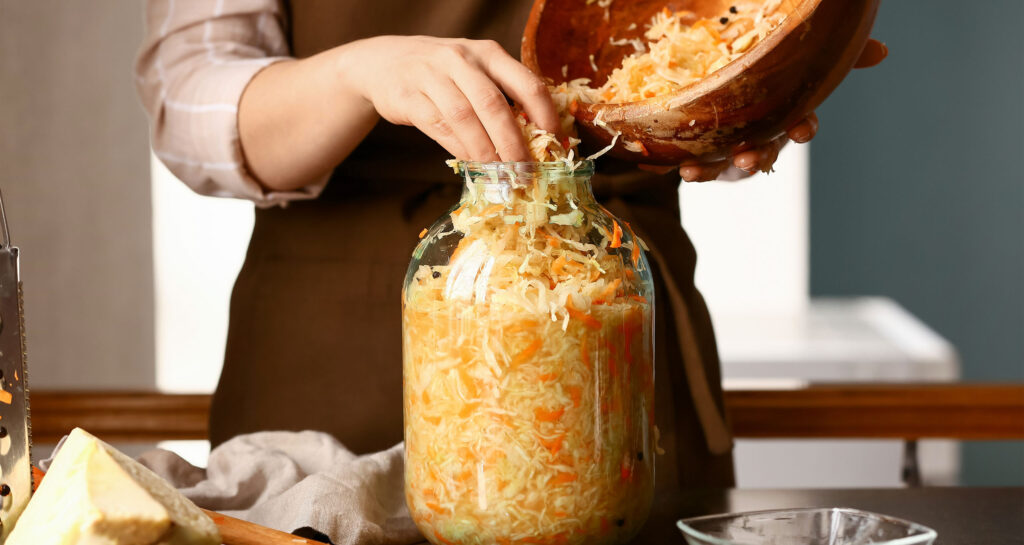
How to ferment foods: A DIY guide
Making your own fermented foods might sound intimidating, but it’s actually less complicated than most people think.
Here’s a simple, foolproof way to get started:
1. Pick your food
Start with vegetables — they’re beginner-friendly and forgiving. Cabbage (for sauerkraut) and cucumbers (for pickles) are classic choices, but you can also ferment carrots, radishes, or even green beans.
2. Get your gear
You don’t need fancy equipment. A clean jar, some salt, and water are your basics. A fermentation weight or a clean stone can help keep things submerged. And if you want to feel fancy, grab an airlock lid to let gases escape.
3. Prepare the food
Chop your veggies into desired sizes. For sauerkraut, shred cabbage finely; for pickles, keep cucumbers whole or slice them into spears. The smaller the pieces, the quicker they ferment.
4. Make a brine
Mix water and salt to create your brine. A common ratio is 2 tablespoons of salt per quart of water. Stir until dissolved.
5. Pack and submerge
Pack your veggies tightly into the jar, leaving about an inch of space at the top. Pour the brine over until everything is fully submerged. This is crucial! Exposed veggies can mold, and no one wants that kind of drama.
6. Wait for the magic
Cover your jar with a loose lid or a cloth secured with a rubber band. Let it sit at room temperature, away from direct sunlight. Taste your creation after 3–5 days. Some ferments might take up to 2 weeks. Patience, grasshopper.
7. Store and enjoy
Once you’re happy with the flavor, seal the jar and pop it in the fridge. Fermentation slows in cold temperatures, preserving your masterpiece.
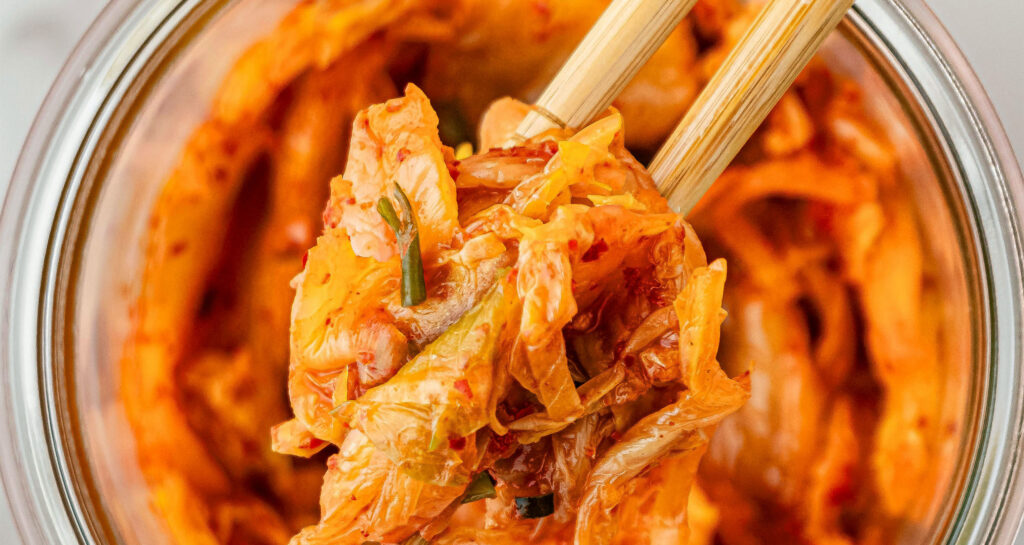
Recipe ideas using fermented foods
Now that your kitchen counter looks like a science experiment, let’s put those tangy treats to good use! Here are some tasty recipes featuring fermented foods:
1. Kimchi fried rice
A savory, spicy way to transform leftover rice. Try this recipe.
2. Reuben sandwich
Pile corned beef, Swiss cheese, sauerkraut, and Russian dressing onto rye bread. Grill until gooey perfection ensues. Find a detailed recipe here.
3. Kombucha cocktail
Mix your favorite kombucha with vodka for a Highball with a twist. Here’s a recipe.
4. Miso soup
A comforting bowl of umami goodness. Follow this recipe.
5. Sourdough pancakes
Use your sourdough starter discard for these fluffy delights. Check out the recipe.
6. Fermented salsa
A tangy twist on the classic dip. Learn how here.
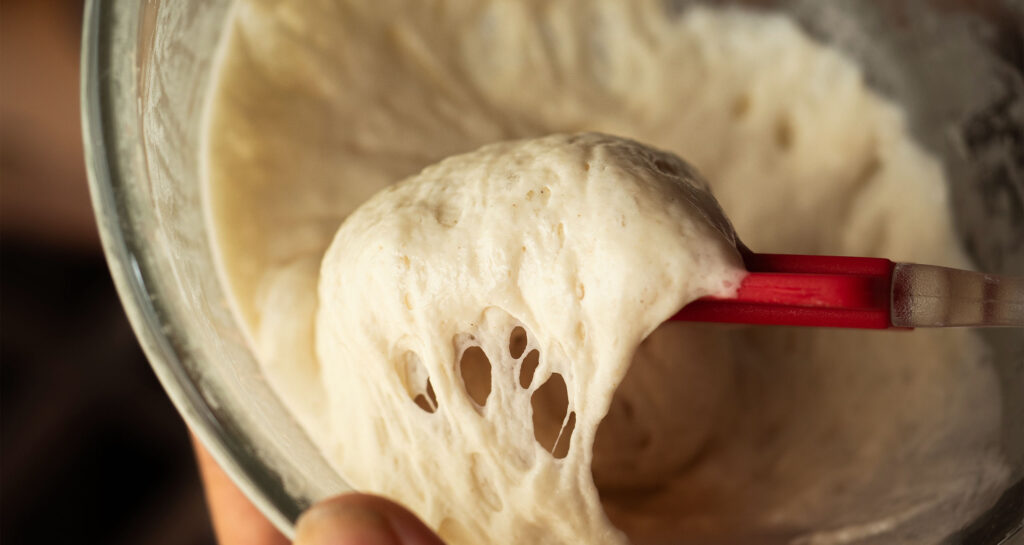
A final word (or two)
Fermenting your food is a delightful mix of science, art, and a little bit of luck. Yes, you might have a batch go funky (trust me, it happens to the best of us), but the rewards are well worth the occasional mishap.
So roll up your sleeves, grab some jars, and let the fermentation adventures begin. Your gut will thank you, and your taste buds will be doing a happy dance.



